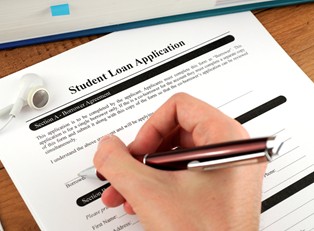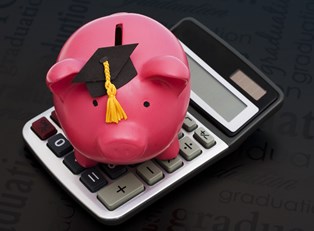Whether you’re an incoming freshman or you’re approaching graduation, you probably borrowed some money to help pay for tuition. Student loans can be a huge help for those who otherwise couldn’t afford to attend college, but they can also put recent grads in a sticky situation. The idea of an excess aid “payday” is alluring, but taking out big loans for today’s fun can really kick your future-self in the butt. Take it from a new college graduate: here’s what you’re up against after you get your degree.
Payments begin sooner than you think.
You have a grace period of six months after graduation before you have to make monthly payments on federal student loans. Six months may not feel like a short period of time, but it's over faster than you think. When your six-month grace period is up, there are no excuses. You are required to start repaying your loans—even if you haven’t found a job yet. Whatever you do, do not take this time for granted.
Here’s what I wish I’d known while I was in school: you can start making payments on your loan's interest at any time. A loan I borrowed at the start of freshman year gained $1,500 in interest in just four years. If you’ve taken out an unsubsidized loan every year, you’re looking at thousands that you could’ve been making contributions towards as a college student.
Even if you’re fortunate enough to have subsidized federal loans (student loans that don’t accrue interest while you’re in school), don’t sit on your loans until your six months are up. You can make payments during the grace period. Every little bit helps.
You might qualify for an income-based repayment plan.
Don’t panic if you can’t find a job immediately upon graduating. There are income-based repayment plans that adjust your monthly payments based on your income. As long as your federal aid is in your name, as opposed to a parent PLUS loan, you're eligible for consideration.
You aren’t automatically given an income-based repayment plan; you need to fill out an application first. The Income-Driven Repayment Plan Request can be completed online or on a traditional paper form. You’ll need to provide proof of your income (or lack thereof) in order to see what type of plan you qualify for.
If you qualify, your repayment plan will work a little differently than your friends' plans. Instead of paying the standard 10-year plan amount, your loan payments won’t exceed 20% of your discretionary income. You’ll also have an extended period of time to pay back your loans, often stretching to 20 or 25 years. Although you’ll have the benefit of lower payments, you’ll end up paying more on interest due to the extended repayment term.
Strongly consider loan forgiveness programs.
Depending on your field of study and career path, you may be able to have some (or all) of your loans forgiven. Full-time teachers working in low-income schools for five consecutive years may have up to $17,500 of their Direct Loans forgiven. Full-time public service employees are also eligible for loan forgiveness, as long as they’ve made 120 on-time monthly loan payments under an official loan repayment plan.
If you took out a Perkins loan, you can have a certain percentage of your loan canceled for every year of service in a particular program or profession. Aside from teaching, you can enlist in the armed forces, join the Peace Corps, join law enforcement, or enter the medical field. And remember, just because you’re enrolled in a forgiveness program doesn’t mean you can stop paying your loans, no matter what Lee Siegel wrote in his New York Times op-ed. Your student loan payments can affect your credit score (and worse) so take them seriously. Trust me.




